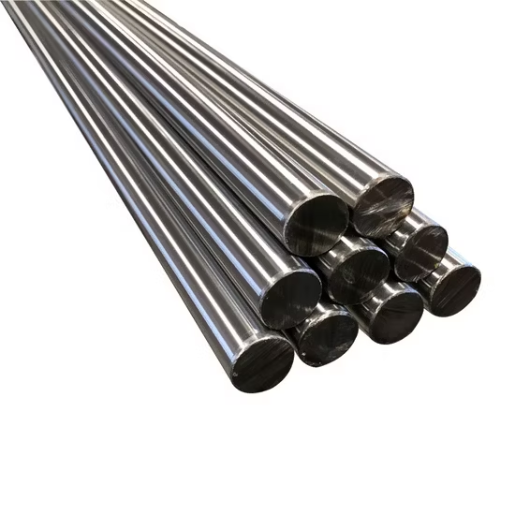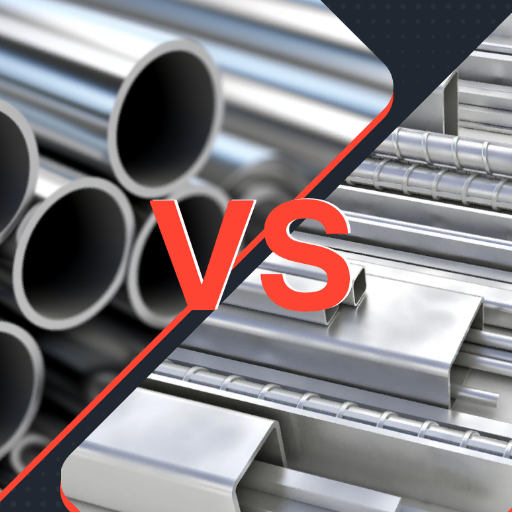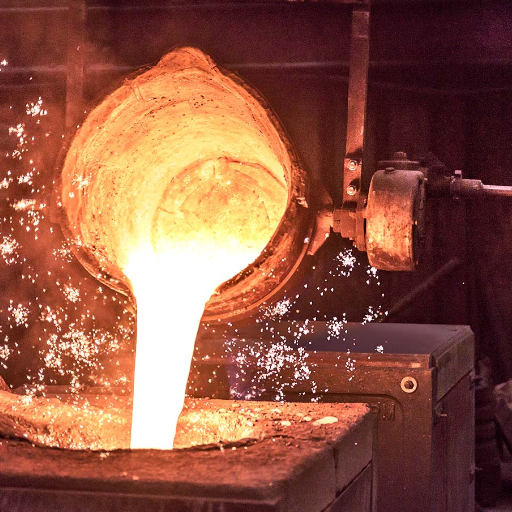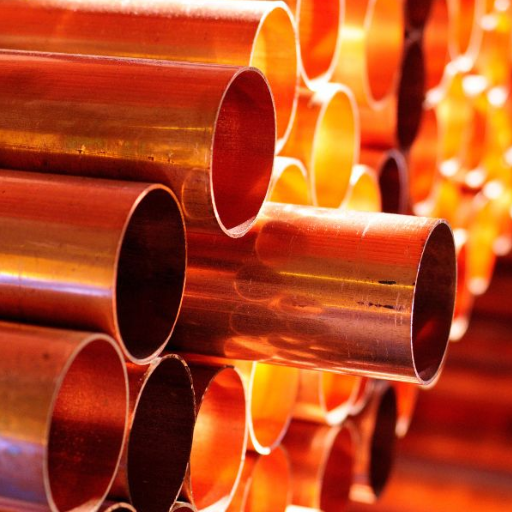Stainless steel diamond plate is one of the most useful and most often used materials in many fields. It is famous for its strength, the ability to resist corrosive substances, and its striking textured surface which offers utility and beauty at the same time. Whether you are looking at its uses in construction, transport, or interior design, this material gives unmatched effectiveness while providing a sophisticated appearance. As we move through this article, we will explore the advantages of using stainless steel diamond plate starting from its exceptional endurance all the way to its anti-slip features and understanding why it is so popular with professionals who need dependable and effective options. Stay with us as we discuss the practical and design options this new material could address for you.
What is Stainless Steel Diamond Plate?

A flat sheet as common as stainless steel diamond plate has its own flair with a pattern of diamonds engraved on one of its sides. As the name suggests, it is a metal sheet made of stainless steel. Further, stainless steel is a corrosion resistant alloy that is known for its strength and longevity. This material is extremely durable, simple to clean, and designed with slip resistance to provide slip dexterity-enhancing compliance, which primarily assists in industrial and commercial settings. It is commonly used for flooring and protective surfaces like ramps and other surfaces where safety and durability matter the most. Lastly, in addition to its appeal, it serves many structural functions and serves as a practical and decorative combo.
Understanding the Diamond Pattern
The diamond pattern is a design used repeatedly on surfaces that incorporates raised diamonds and crosshatch textures. The roller had to go over a plate multiple times to achieve the required depth and crosshatch pattern on the diamonds. The design’s primary function is to improve traction and increase the coefficient of friction to prevent slips or falls from happening in either dry or wet environments. This particular design also helps in the removal of spoiling fluids or solids from the surface, making it cleaner for use in harsh conditions. Manufacturing, transportation, and construction industries use this pattern on flooring, stair treads, and loading docks so that they meet tough safety guidelines without compromising material functionality. Modern development in machining and fabrication techniques permits accurate application of the diamond pattern which optimizes its efficiency to suit particular needs. These modifications guarantee uniformity in the performance which sustains diverse industrial and architectural needs.
Key Properties of 304 Stainless Steel
The best known type of stainless steel, 304 stainless steel, stands out for its corrosion resistance and makes a prefix mark on number the robust industrial and marine environments. 304 stainless steel stands out because of how well rounded its mechanical and chemical properties are, making it one of the most versatile and commonly used types of stainless steel. With chemicals, SRC requires a stabilizer if the environment is resistant to corrosion, industrial, marine, or chemical environments to dominate its working range. It has a well balanced composition containing 18% of chromium and 8% nickel, giving it significant strength for diverse environment.
The material demonstrates workable formability and weldability, making it suitable for use in supportive frameworks as well as complex manufacturing operations. The material’s nominal tensile strength is within the range of 505 MPa (73 ksi) to 735 MPa (107 ksi), with yield strength approximately 215 MPa (31 ksi) , which means that the material will withstand stress without significant distortion and is effortless to manipulate. Also, 304 stainless steel is able to perform excellently in high-temperature settings up to about 870°C (1,600°F), oxidizing only superficially while maintain the structure and materials within.
The surface finish of the material is hygienic and thus required for the medical and food industry due to its resistance to bacterial growth. In addition to this, 304 stainless steel can maintain a smooth surface scrubbed clean. Unlike the rest, this material has a non-magnetic circumference and hence can be used in the automotive sector, architectural features, or even storage tanks for chemicals.
How is Stainless Steel Diamond Plate Manufactured?
The manufacturing process of stainless steel diamond plate includes multiple steps that are more controlled than the processes on which material durability and desired textures depend. First, stainless steel, particularly 304 or 316 grades, is selected based on the their strength and ease to further process due to corrosion resistive properties. Furthermore, the raw stainless steel is hot rolled in order to obtain uniform thickness and flatness. The initial steps of hot rolling involve heating the steel above the recrystallization temperature; this allows the steel to be shaped more efficiently, yielding useful base plate material.
After the base plate is complete, a pattern is rolled onto the surface of the plate. The cylinder or cylinders bearing the diamond design have their surfaces engraved, and they roll on the heated stainless steel plate, Elaborate contraptions imprint the surface design on the material due to the heat and pressure applied. The uniformity of suction molded diamond shapes that increase slip resistance and improve grip in industrial and commercial contexts are crafted. Precision during this stage is achieved using sophisticated mills and machinery that imprint diamonds’ height, spacing, and alignment.
After surface treatment like pickling, passivation or polishing, which gets rid of rust while increasing corrosion resistance, the plates are left to cool. An inspection is performed to verify quality and uniformity. Finally, the plates are trimmed to standard or requested measurements and prepared for shipment. All steps taken are important when manufacturing stainless steel diamond plates that are safe, strong, and visually appealing.
What are the Applications of Stainless Steel Diamond Floor Plate?
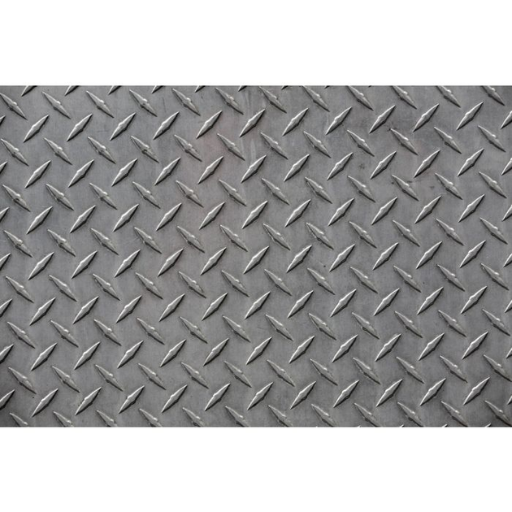
Some of the places that commonly use stainless steel diamond floor plates include factories, food production facilities, and even some architecturally designed stairs, as these places require high durability as well as slip resistance. Since these plates aesthetically pleasing, they are highly used in warehouses and other staff movement areas to provide safe walkways throughout the industrial places. Due to the ease of stainless steel cleaning, these materials can also be used in areas of drug production with high cleanliness standards, like food processing units. The range of versatility stainless steel diamond plates provide prove the strength and safety of these materials.
Common Uses in Commercial and Industrial Settings
Benefits for Marine Environments
Due to the extreme marine environment’s saltwater and high humidity atmosphere, stainless steel has superior corrosion resistance and durability, and can withstand harsh conditions. Even more so, the shifting temperatures, saline water, and high humidity stainless steel is exposed to makes these benefits even more useful. The advantages of stainless steel in a marine environment are outlined in detail below:
- Exceptional Corrosion Resistance
Due to the addition of molybdenum into duplex steels, they are vertically pitting, fastening back crevice corrosion and salt stress cracking prone. Thus, 316 stainless steels along with duplex steels make strong structures in marine settings such as boats, Angular plates, and underwater tunnels and can exoend the longevity of other waterside constructions such as bridges.
- High Strength and Durability
The stress rupture Australians is also low, meaning that supporting column pipes used within vessels will not buckle like ordinary steel. Separating weight from power, duplex stainless steel scores high on both, making it ideal for use in undersea tunnels global ships as well as other vessels.
- Low Maintenance Requirements
Approaching an underwater source of operable contamination follows known standard procedures. These controlled methods result in less discolouration on surfaces over prolonged periods of time which means that less cleaning gear is needed and repair is not shift work on deck. Using thin nozzles allows abstraction cleaning and clogs effortlessly without causing needless spots which saves washing solutions of high value. From all traditional repair works aboard ships, the chances these would not stain are high.
- Environmental Sustainability
Being eco-thoughtful during maritime operations has grown through need and in connection with global warming and movements toward sustainable development. The wide-ranging solid policy reduces steel use giving emphasis on environmental loading because replaceable polished structures stationed outside underwater require on constant replacement.
Research and field data continuously prove how marine engineering does not make do without the use of stainless steel. As an example, the International Molybdenum Association study states that marine equipment life cycle operational costs may be reduced by up to 50% when molybdenum-containing stainless steel is used, mitigating equipment maintenance and replacement costs for long period of time. These attributes make stainless steel an indispensable material in advancing the reliability and sustainability of marine operations.
How Does Stainless Steel Diamond Plate Compare to Other Materials?
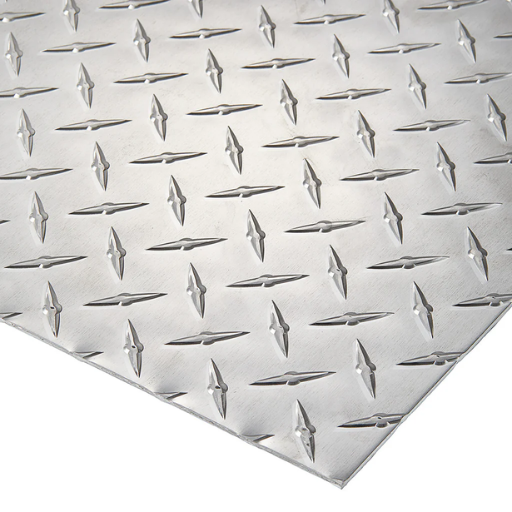
Stainless steel, especially stainless steel diamond plate, has clear advantages over other materials. It is easier to maintain and has a more durable service life. In environments with heavy foot traffic or cumbersome loads, aluminum, although lightweight, does not stand up well regarding durability. In these cases, stainless steel’s diamond plate would be superior. Additionally, unlike carbon steel, stainless steel diamond plate does not need extra rust protective coatings which add additional expenses and maintenance in the long run. Due to its slip-resistant surface, diamond plate also improves safety, especially in wet and industrial areas. Thus making it a preferred material where functionality and dependability are critical.
Stainless Steel vs. Aluminum Diamond Plate
|
Key Point |
Stainless Steel Diamond Plate |
Aluminum Diamond Plate |
|---|---|---|
|
Material Strength |
Extremely high |
Moderate |
|
Corrosion Resistance |
Excellent, resistant to rust |
Good, but prone to oxidation |
|
Weight |
Heavy |
Lightweight |
|
Durability |
Superior for heavy-duty applications |
Less durable under heavy loads |
|
Maintenance Requirements |
Low, no coatings needed |
Regular maintenance may be needed |
|
Cost |
Higher upfront cost |
More affordable |
|
Slip Resistance |
Excellent |
Good |
|
Aesthetic Appeal |
Shiny, high-end look |
Sleek, modern appearance |
|
Heat Conductivity |
Poor, low conductivity |
High conductivity |
|
Ease of Fabrication |
Harder to cut and form |
Easier to cut and form |
|
Sustainability |
100% recyclable |
100% recyclable |
This table offers an authoritative analysis between stainless steel diamond plates and aluminum diamond plates so that users can choose options which best meet their requirements and intended uses.
Cost Analysis: 304 Stainless Steel vs. Other Alloys
|
Parameter |
304 Stainless Steel |
316 Stainless Steel |
Carbon Steel |
Aluminum |
|---|---|---|---|---|
|
Cost per pound |
Moderate |
High |
Low |
Low to moderate |
|
Corrosion resistance |
High |
Superior |
Poor |
Moderate |
|
Tensile strength |
~515 MPa |
~515 MPa |
~400-550 MPa |
~310-570 MPa |
|
Weldability |
Excellent |
Excellent |
Good |
Excellent |
|
Durability |
Superior |
Superior |
Moderate |
Good |
|
Weight (Density) |
8.0 g/cm³ |
8.0 g/cm³ |
~7.85 g/cm³ |
~2.7 g/cm³ |
|
Maintenance required |
Low |
Low |
High |
Moderate |
|
Thermal conductivity |
Low |
Low |
Low |
High |
|
Preferred applications |
Food, construction |
Marine, medical |
Heavy machinery |
Automotive, aerospace |
|
Sustainability |
100% recyclable |
100% recyclable |
100% recyclable |
100% recyclable |
|
Availability |
Widely available |
More specialized |
Easily available |
Widely available |
This table offers a detailed technical comparison of 304 stainless steel with other alloys to ensure optimal selection based on cost, performance, material properties and intended uses.
What Sizes and Shapes are Available for Diamond Tread Plate?
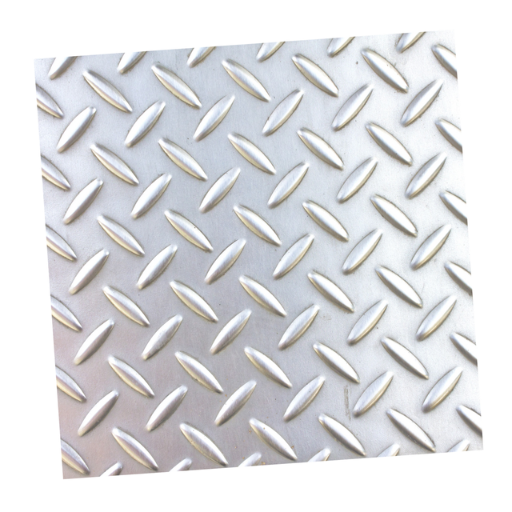
Plates diamond tread are offered in a variety of preset dimensions to accommodate different requirements. Common sheet dimensions include widths of 36, 48, and 60 inches , while the length usually ranges from 96 and 120 inches. Reportedly, the thickness starts at 1/8 inch to 1/2 inch or more depending on the use. The default form is rectangular, however custom shapes and precut chunks are easy to find. For industrial and decorative use, the plates are designed with a rough anti-slip surface, which is ideal as aluminum and stainless steel are often used for these plates.
Standard Plate Sizes for Different Applications
The application dictates the type of plates in terms of size and material. For industrial purposes, the flooring factories or the walkways in congested areas make use of plates with a thickness range from 3/16 to 1/4 inch. These plates are thicker and more durable and have greater strength and load-bearing capacity. In transportation and automotive uses, lightweight Aluminum plates for ease of handling are corrosion-resistant and are usually 1/8 to 1/4 inch thick.
They range from 1/4 to 1/2 inch marine-grade aluminium plates are widely adopted in construction of ships and offshore structures. Their high resistance to corrosion from saltwater, coupled with the strong yet light 1/4 to 1/2 inch thick materials used makes them ideal for dealing with nautical projects. Decorative or architectural work usually employs other types of thinner plates which are 1/8 inch or less.
Diamond or tread plates are known to have specialized forms which can be used on both heavy-duty building projects as well as decorative works. Such plates have a distinctive textured surface which improves grip and reduces the chance of slipping, making them very useful in high safety requirement areas. Most plates come in standard widths and lengths, while some are custom cut to suit project needs.
Custom Shapes and Sizes: What to Consider
Custom shapes and sizes for specific applications require evaluation of various critical factors to ensure performance and efficiency. Material selection is a primary consideration because different metals and alloys have varying degrees of strength, corrosion resistances, and machinability. Also, the expected load and environmental conditions impact the required thickness and dimensions. For example, industrial or marine projects may require materials that withstand severe environmental conditions.
Custom workflows and claw machines can be as precise as laser and water jet cutting. These processes can be highly intricate as they allow forms with very fine details. In addition, construction tolerances and edge treatment must be specified during the design process as they will influence the functionality of the product. A good wide-ranging supplier with sound technical knowledge is ideal for ensuring all aspects of the designs are met.
How to Maintain and Polish Stainless Steel Diamond Plate?
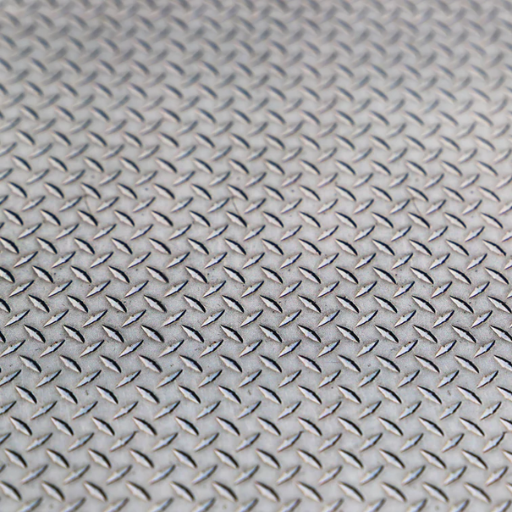
To maintain polish on a stainless steel diamond plate.
- Cleaning: Clean the surface of the diamond plate with a soft microfiber cloth along with a warm water-detergent mixture. Rinse with clean water. Keep the polish stainless strip on the diamond off until applying the best results only after rinsing with warm water.
- Drying: Ensure the surface is dried with a lint free cloth to avoid streaks.
- Polishing: Apply polish to the surfaces that need it most, then rub off the residue until smooth.
- Regular Maintenance: Stainless steel requires inspection to remove corrosion if exposed to harsh wear, cleaning, and polishing if strong signs of corrosion.
- Protective Coating (Optional): If desired, stainless steel sealant can be applied to the surface protective coating to enhance durability and reduce wear over time.
Following these guidelines will keep the stainless steel diamond plate working and looking good for a long time.
Cleaning Techniques for Stainless Steel
In order to keep staining on stainless steel surfaces at bay and enable the steel to serve its purpose for long, advanced methods of cleaning based on best practice must be employed. Begin from the top by loosening dirt and dust using a non-aggressive microfiber cloth. For general maintenance, grease and other surface contaminants can be removed with a solution of warm water and mild liquid soap. Remember to rinse the area thoroughly with clean water to avoid leaving any residues behind which can mask the luster.
For stubborn stains, applying a paste of baking soda and water with a suitable non-abrasive sponge can help lift blemishes without harming the steel. Furthermore, specially formulated cleaners for stainless steel are effective in removing stubborn fingerprints, smudges, or marks left due to oxidation discoloration. Such cleaners often contain formulations intended to safeguard the chromium oxide protecting layer which provides the steel with anti-corrosion capabilities.
Do not apply cleaning methods using harsh chemicals such as bleach, ammonia, or any chlorine-based products, since these would weaken the steel’s finish plus destroy its structural integrity. Also avoid using steel wool and other rough cut materials as these could lead to corrosion or scratches.
Stainless steel polishing lotion can be applied in areas that have dirt or unattractive marks. Doing so will guarantee shine and surface protection. Using these techniques regularly will help the steel retain its aesthetic and functional value for long periods of time.
Best Products for Polishing and Maintenance
Pay attention to products crafted for cleaning, polishing, and protecting the stainless steel material when selecting bars for care and maintenance. It is a fact that Bar Keepers Friend Stainless Steel Cleaner is one of the best stainless steel cleaners because it effortlessly eliminates fingerprints, grease, and residue without scratching the surface. This Weiman Stainless Steel Polish and Cleaner not only offers cleaning but also polishing with its two-in-one action formula.
For further eco-friendly options, look for products like Therapy Stainless Steel Cleaner and Polish since they contain plant based products that clean well and leave behind a streak-free shine. It is also best to buy microfiber cloths which provide a lint-free shine devoid of scratches and nicks. Stainless steel remains understated and beautiful for a long time when the protective chromium layer is preserved and tarnish is kept at bay using proper maintenance techniques and products.
Reference Sources
-
Research on Control Strategy of Stainless Steel Diamond Plate Pattern Height Rolling 12: This study introduced the Multi-Objective Adaptive Rolling Iteration method (MOARI-LC) to optimize the rolling process for stainless steel diamond plates. The method improved the pattern height-to-thickness ratio to 0.20–0.22, outperforming other methods. It also increased the qualification rate of test products by over 25%.
-
Diamond Coatings on Femtosecond-Laser-Textured Stainless Steel 316 Surfaces3: Femtosecond laser texturing significantly improved the adherence of diamond coatings on stainless steel 316 substrates. The study achieved a 19 μm-thick diamond coating with a quality factor of 96%.
Frequently Asked Questions (FAQs)
Q: What is stainless steel diamond plate and what are its benefits?
A: Stainless steel diamond plate, also known as stainless tread plate, is a durable material characterized by its raised diamond lug pattern that provides excellent skid resistance. Its benefits include corrosion resistance, low maintenance, and a wide range of applications in various industries.
Q: How does the raised diamond lug pattern enhance safety?
A: The raised diamond lug pattern on stainless steel floor plates provides excellent skid resistance, making it ideal for high-traffic areas such as trailers, walkways, and industrial floors. This pattern helps prevent slips and falls, ensuring safety in various environments.
Q: Can stainless steel diamond plate be easily welded?
A: Yes, stainless steel diamond plate is known for being easy to weld, allowing for seamless integration into various structures. This property makes it a preferred choice for many fabrication projects that require reliable joints.
Q: What is the lead time when ordering stainless steel diamond plate?
A: The lead time for stainless steel diamond plate can vary based on the supplier and the specific order details. Typically, it ranges from a few days to several weeks, depending on stock availability and manufacturing processes.
Q: Is stainless steel diamond plate suitable for outdoor use?
A: Yes, stainless steel diamond plate is highly suitable for outdoor use due to its excellent corrosion resistance. It can withstand harsh weather conditions without compromising its structural integrity, making it ideal for applications like trench covers and external flooring.
Q: What thicknesses are available for stainless steel tread plate?
A: Stainless steel tread plate is available in a variety of thicknesses, allowing for customization based on the specific application requirements. Common thicknesses range from 1/16 inch to 1/4 inch, but thicker options may also be available.
Q: How do I maintain stainless steel diamond plate?
A: Maintaining stainless steel diamond plate is relatively easy. Regular cleaning with a brush and mild detergent is recommended to remove dirt and grime. For more stubborn stains, specialized stainless steel cleaners can be used to restore the shine.
Q: Where can I buy stainless steel diamond plate?
A: You can buy stainless steel diamond plate from various metal suppliers, online retailers, and industrial supply stores. It’s essential to choose a reputable supplier that offers a wide range of products and reliable service.

